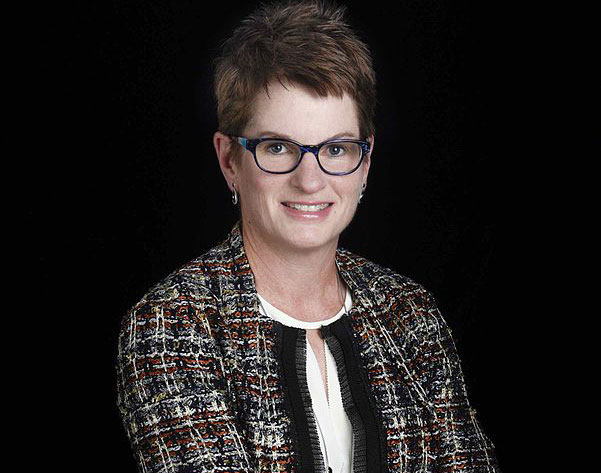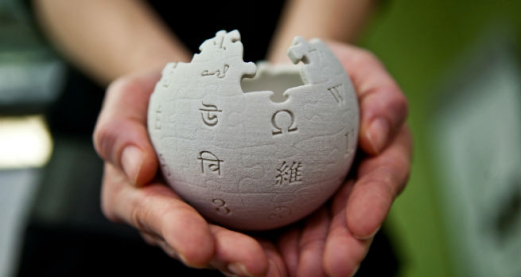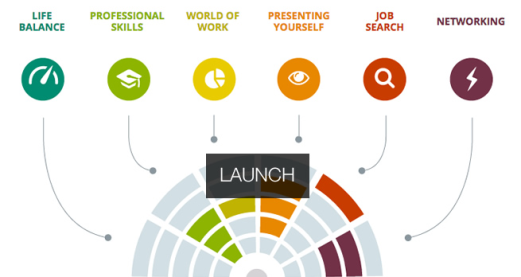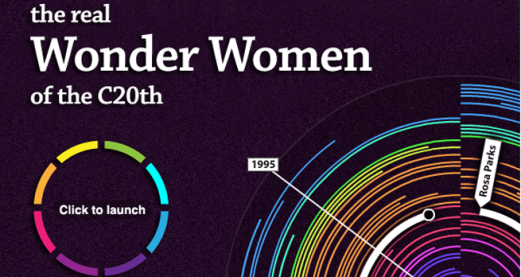There’s no getting around it. A lot of scientists are white men, and it’s always been that way.
But it’s never been the whole picture.
Getting a better picture of scientists whose work or lives are notable matters. It’s fascinating and inspiring. And Wikipedia is a great place to make it easy.
We’ve got a lot to do. There is more hole than picture, really, in both the history and the present of science when it comes to women and scientists of color for starters.
That’s not going to change naturally. It needs activist energy. Gender bias on Wikipedia is such a big deal that it even has its own Wikipedia page.
Once you’ve got the hang of Wikipedia editing, you don’t even have to do a lot of heavy-lifting to make a difference. You can do some tidying up and micro-improvement of pages about scientists that are already there. Anything from fixing typos or improving readability, to explaining the scientist’s key work.
Read something interesting about a scientist from a minority, marginalized, or under-represented background? Check if they’ve got a Wikipedia page and find something to add (or repair) with that reference.
Another way to chip in is to think of the Wikipedia when there are important developments in people’s lives or progress in diversity in science. Noting it there improves the quality of coverage of scientists who could be neglected – and drawing attention to that might trigger additional effort from others.
I’ve decided to put more energy into this myself. Here’s a recent tiny-effort example. Earlier this month,Erin O’Shea was named the first woman to head the prestigious Howard Hughes Medical Institute (HHMI). So I popped into her Wikipedia page and added that wonderful development to it. By the way – I couldn’t find a photo of O’Shea in Wikimedia Commons, so her page couldn’t be illustrated. Post Update: With a couple of pings on Twitter, we’ve got her image on her page now (thanks HHMI!). It can take so little effort to make a difference on Wikipedia.
 Erin O'Shea, as pictured on Wikipedia
Erin O'Shea, as pictured on Wikipedia
And if you’ve got a really good photo you’ve taken of O’Shea – or any other notable scientist – here are FAQs if you want to know more about the Commons.
Even a small page is better than invisibility in the world’s most-visited central knowledge base.
Adding a scientist can be a big project – but it’s rewarding, and exciting to discover more about people who inspire you.
It’s not just that you find new heroes you’d not heard of before either. Their work can change your thinking.
That happened to me when I was looking for an African-American woman scientist to add last year in Black History Month – and discovered the fabulous Margaret Morgan Lawrence.
Lawrence studied resilience in African-American children and families. Her work should have upturned our habit of talking about “nature versus nurture” – a dichotomy that doesn’t take social determinants into account. Here’s how she neatly wove that in:
Strength abounds in Harlem. Three hundred years of oppression and it survives. This is the task in Harlem, to see strength where it exists, to expect it to be there, right there, next to, and a part of nature, nurture and noxia. Even anger may show strength. It can sustain a child and protect him until he is helped to find more suitable vehicles for his ability to love and to act.
She’s an astounding person. Here’s more from the Wikipedia page, this time from Jack Geiger’s New York Times review of a book Lawrence’s daughter wrote about her life, the collision of race and gender obstacles she faced, and many decades of her achievements:
Do these scars last? I have rarely read anything as painful as Margaret Lawrence’s account, told to her daughter, of her return to Columbia Presbyterian Hospital nearly 50 years later. She is, by now, a famous physician, full of honors and achievements. She steps into an elevator and then suddenly: “I feel especially self-conscious about my hands…I think, if only I had on my white coat, I could put them in my pockets…Here I am, black as you see me…Here are my hands, exposed…I am in the elevator, confronted with the difference.
Here’s another example. I was checking out Wikipedia’s timeline of immunology, and was curious about one of the few women someone added – but she didn’t have a Wikipedia page. Her name is Eva Klein, and she’s considered one of the founders of cancer immunology.
She led the discovery of natural killer cells in the 1970s, no less (and gave them that name), after developing cell lines in the 1960s. Klein is now in her 90s, and turned out to have an action-packed, extraordinary life, too – constrained by anti-semitism, and driven into hiding in Budapest during the German occupation to survive. Her husband had a Wikipedia page – and I found a photo of her and him, where he was named and she wasn’t. (Here’s her new Wikipedia page – and it could use photos too. If you’re inspired, contact her and/or the Karolinska Institute!)
If you’ve got the urge to follow suit, there’s another woman on the immunology timeline who doesn’t have a Wikipedia page. Katherine McDermott is credited for adjuvants in 1942. Who is she? What’s her story?
There’s going to be a Wikipedia edit-a-thon on diversity in science at the 2016 AAAS meeting. That’s a space where you learn the ropes of Wikipedia editing if you need to – with experienced Wikipedians there to help. Wikipedia edit-a-thons are a lot of fun. Go if you get a chance!
It’s Black History Month in the US, so there are some more edit-a-thons: you can see a list here. (There’s one at Howard University!) If you need to learn on your own, try the Wikipedia Adventure.
There’s support at the Wikipedia Teahouse too. If you want to take on more, and are looking for inspiration, check out the ongoing Wikipedia project on women scientists – and one on the history of science. At the NIH, we made a start last year for Women’s History Month, and we’re going to start getting active at the intersection of race and gender this month. (You can keep up with developmentshere.)
Reading about scientists in the Wikipedia and spreading the word about them is the real starting point though. There’s a vivid world of curiosity and achievement out there, often known to very few. People who faced daunting obstacles left so many inspiring stories. They shouldn’t be invisible. We still need them.
The Wikipedia page for Beth Brown, an African-American astrophysicist, could be expanded. Here are some places to start.
Are you interested in mathematicians? I’ve gathered some materials to improve the page for Alice Bache Gould on the article’s talk page: have a go!
This article originally appeared on the PLOS blog network



Rate and Review
Rate this activity
Review this activity
Log into OpenLearn to leave reviews and join in the conversation.
Activity reviews